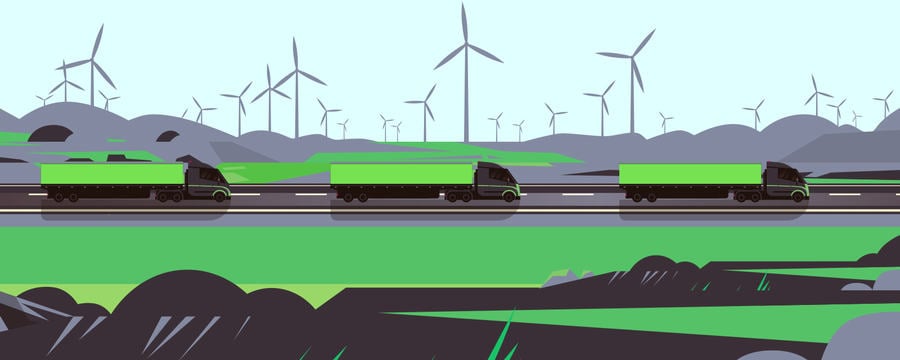Using the GreenSCOR Model in Procurement Processes
According to the Supply Chain Council, the Supply Chain Operations Reference (SCOR) model:
…provides a unique framework that links business process, metrics, best practices and technology features into a unified structure.(Naslund and Williamson 2010)
…integrates environmental considerations through processes, metrics and best practices into supply chain management operations.(Cheng et al. 2010, Schoeman and Sanchez 2009)
GreenSCOR model: identifying environmental impacts
Using the SCOR model to identify the environmental impacts of a supply chain (2003)
Plan
- Plan to minimise energy consumption and hazardous material usage
- Plan the handling and storage of hazardous materials
- Plan for the disposal of ordinary and hazardous waste
- Plan compliance of all supply chain activities
Source
- Select suppliers with positive environmental records
- Select materials with environmentally friendly content
- Specify packaging requirements
- Specify delivery requirements to minimise transportation and handling requirements
Make
- Schedule production to minimise energy consumption
- Manage waste generated during the Make process
- Manage emissions (air and water) during the Make process
Deliver
- Minimise use of packaging materials
- Schedule shipments to minimise fuel consumption
Return
- Schedule transportation and aggregate shipments to minimise fuel consumption; prepare returns to prevent spills of hazardous materials (oils, fuels, etc) from damaged products
GreenSCOR model: defining environmental performance attributes
Linking SCOR performance attributes with environmental performance (Source: UNEP 2003)
| Performance attribute | SCOR definition | Environmental definition |
| Reliability | The performance of the supply chain in delivering: the correct product, to the correct place, at the correct time, in the correct condition and packaging, in the correct quantity, with the correct documentation, to the correct customer | The ability to deliver the correct product reduces waste from product discards; reduces air emissions and fuel use from extra transportation for returned products. Proper documentation enables all plays of the supply chain to keep better track of hazardous materials or toxins that are embedded in certain products; thus allow them to arrange for proper storage, handling and disposal |
| Responsiveness | The velocity at which a supply chain provides products to the customer | The environmental impacts that affect the speed of material movement, including regulatory or pollution control steps within a process |
| Flexibility | The agility of a supply chain in responding to marketplace changes to gain or maintain competitive advantage | The degree to which a firm can meet the environmental demands of its customers. This pertains to the products, their production, transportation and recyclability etc. |
| Costs | The costs associated with operating the supply chain | The costs of environmental compliance and cleanup as well as the energy costs |
| Asset management efficiency | The effectiveness of an organisation in managing assets to support demand satisfaction. This includes the management of all assets: fixed and working capital | Managing assets in a manner that reduces environmental impacts and reduces internal costs |
GreenSCOR model: developing environmental performance metrics
Examples of GreenSCOR environmental performance metrics
References
Cheng, J., Law, K., Bjornsson, H., Jones, A., Sriram, D. (2010) ‘Modelling and Monitoring of Construction Supply Chains’. Advanced Engineering Informatics 24 (4), 435-455
Gnomi, M. G., Lanzilotto, A. (2013) ‘The GreenSCOR: A Critical Assessment for Supporting Effective Green Supply Chain Management’. XVIII Summer School ‘Francesco Turco’ – Industrial Mechanical Plants. Senigallia, Italy, 11-13 September 2013, 256-261
Naslund, D., and Williamson, S. (2010) ‘What is Management in Supply Chain Management? A Critical Review of Definitions, Frameworks and Terminology’. Journal of Management Policy and Practice 11 (4), 11-28
Ntabe, E., LeBel, L., Munson, A., Santa-Eulalia, L. (2015) ‘A Systematic Literature Review of the Supply Chain Operations Reference (SCOR) Model Application with Special Attention to Environmental Issues’. International Journal of Production Economics 169 (3), 310-332
Pinto, M. M. A., Kovaleski, J. L., Yoshino, R. T., and Pagani, R. N. (2019) ‘Knowledge and Technology Transfer Influencing the Process of Innovation in Green Supply Chain Management: A Multicriteria Model Based on the DEMATEL Method’. Sustainability 11 (12), 1-32
Schoeman, C., and Sanchez, V. (2009) ‘Green Supply Chain Overview and a South Africa Case Study’. in Proceedings of the 28th Southern African Transport Conference (SATC) Pretoria, South Africa, 6-9 July 2009, 569-579
Stewart, G. (1997) ‘Supply-Chain Operations Reference Model (SCOR): The First Cross-industry Framework for Integrated Supply-Chain Management’. Logistics Information Management 10 (2), 62-67
UNEP (2003) GreenSCOR: Developing a Green Supply Chain Analytical Tool Report (LG101T4). United Nations Environment Programme (UNEP)
Share this
Sustainability and Green Logistics: An Introduction

Sustainability and Green Logistics: An Introduction


Reach your personal and professional goals
Unlock access to hundreds of expert online courses and degrees from top universities and educators to gain accredited qualifications and professional CV-building certificates.
Join over 18 million learners to launch, switch or build upon your career, all at your own pace, across a wide range of topic areas.
Register to receive updates
-
Create an account to receive our newsletter, course recommendations and promotions.
Register for free







